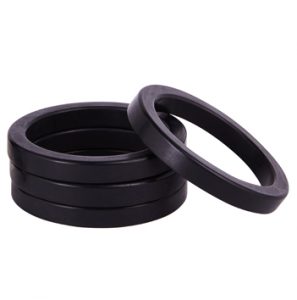Neoprene vs EPDM: Everything you need to know about the two rubber materials
We compare the differences between neoprene and EPDM rubber, plus how both materials are best used within sealing solutions.
Neoprene and EPDM are synthetic rubber materials that are easily moulded. This quality is one of the main reasons they are used in gaskets, electrical insulation and conveyor lines. You’ll also find these types of rubber in many other applications, from laptop sleeves to rubber roofs.
Yet, despite their similar uses, there are many differences between neoprene and EPDM that could impact your purchasing decision process. Let’s explore.
EPDM vs neoprene: the differences
For general purpose products, both materials cut the mustard. However, it’s more common to use EPDM in these applications. EPDM rubber is also the popular choice for providing electrical insulation and noise resistance due to its cost. In contrast, neoprene is much better at providing thermal insulation and is fire, chemical and oil resistant. As a result, it’s often more expensive than EPDM. With that said, EPDM does outperform neoprene in high-temperature performance and is resistant to steam too.
What is EPDM?
EPDM, which stands for ethylene propylene diene monomer rubber, is a polymer derived from oil and natural gases. It’s elastic and will return to its original shape when stretched.
However, this is just one of many useful properties. EPDM is a good electrical insulator, heat resistant and resilient to noise. EPDM roofing materials are very popular, providing cost-effective thermal insulation and a vapour barrier. Interestingly, it’s often used within the materials for gutters too. You can even get EPDM seals, EPDM tape and many other products made from EPDM rubber. The most popular is an EPDM gasket.

Whether it’s a plain gasket, self-adhesive gasket or perforated gasket, you can get the thickness adjusted to suit your needs. EPDM gaskets have excellent UV and ozone resistance, good sealing properties and age exceedingly well. Other EPDM applications include EPDM rubber strips, EPDM washers and EPDM pads.

What is neoprene?
Like EPDM, neoprene is a polymer. Although, unlike its synthetic rubber counterpart, neoprene derives from the polymerisation of chloroprene. These properties make neoprene waterproof and corrosion-resistant. It’s resilient to numerous environmental factors, including UV and oxidisation. Neoprene is known for its durable qualities too. What does this mean in terms of its practical uses? Well, for starters, it’s used in products inside your house. Cables, springs and that expensive belt of yours may well contain neoprene rubber.
Furthermore, neoprene materials are a key component of many popular gaskets and adhesives. Neoprene gaskets can be adapted to suit a wide range of uses. The best quality options provide excellent chemical resistance, super sealing properties and will be UL94 approved. Beyond gaskets, you can find quality neoprene rubber strips, neoprene rubber washers and neoprene rubber pads.

What’s the best rubber for UV resistance?
Compared with many other synthetic rubber materials, such as Buna and butyl rubbers, both EPDM and neoprene have a much higher resistance to UV light. But which is best?
Is EPDM UV resistant?
Yes, very much so. Arguably, its biggest use in the modern world is for roofing. As sunlight is a major source of UV radiation, it would be a disaster if it wasn’t UV resistant. EPDM is used to seal windows and doors, many of which are exposed to sunlight every day. It’s no doubt made of some strong and durable stuff. While it’s a closely fought contest, EPDM offers even better rates of UV resistance than neoprene.
Is neoprene UV resistant?
While EPDM provides greater UV resistance, neoprene has excellent attributes for UV protection. For this reason, it’s used in mobile technology, stainless steel and even for aerospace equipment. Due to the latter, there is neoprene floating above heads right now, close to the sun, resisting high levels of UV. So, while EPDM is the winner in this particular department, both rubbers fit the bill.
Neoprene vs EPDM – the verdict
Despite both being synthetic rubbers, neoprene and EPDM do have contrasting properties. This doesn’t mean that one is better than the other. Instead, it’s a case of choosing one, depending on your application, budget and environment.
If you need a hand deciding between neoprene and EPDM, get in touch with us today. At Ramsay, our friendly team of experts are specialists in synthetic rubber and can help match the right solution to any specification.
In the meantime, don’t forget to follow us on LinkedIn, Facebook and YouTube for more valuable content.
Back to Articles






